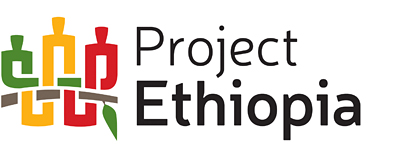Supporting Health Improvements through Livestock and Dairy Production
By Zach Walters, Volunteer
In the Amhara region where we work, a farm household may be dependent on any combination of cattle, sheep, goats, horses, donkeys, poultry, and beehives as both a food source and a primary source of income. Perhaps more important, however, is livestock’s key role in supporting proper nutrition and health in ways a diet of purely regional crops may not. Because a family’s diet is so often self-sourced or bought locally, without healthy and prolific livestock production, many become – or are raised – malnourished. Although Ethiopia has cut the nationwide rates of malnutrition in children from 58% in 2000 to 38%1, the Amhara region remains staggeringly high with 52% of the children suffering from malnutrition and stunted growth.
Issues extend far beyond undereating, however, as there is a big difference between eating for hunger and eating for health. Meat, eggs, cheese, and milk sourced from local livestock provide macro and micronutrients that are essential to proper health and development. Yet, because of the barriers to efficient livestock production, manufacturing processes and transportation systems, millions of Ethiopians lack access to the foods necessary for healthy, productive lives.
So, what are we doing to support better health and nutrition in the Dangla woreda?

In 2004, the Dangla Hiwot Milk Development and Marketing Association was established by 32 local dairy farmers to promote better access to the nutrient-dense food. Despite facilitation from government officials, the association started with only 3,640 birr (~$130 USD) in capital and saw little growth for over a decade. By the time Project Ethiopia got involved in 2016, the association consisted of 42 members, delivered only 50 liters of milk per day, and worked with only 24,000 birr (~$870 USD2) in capital.
Project Ethiopia has contributed in various ways by facilitating training and education on dairy production and management, helping with construction of the association’s office, and even sharing the use of our project Bajaj to pick up milk from nearby farmers to deliver to the association. Today, there are 228 members in the association, enabling the delivery of 1,500 liters per day (a 3000% increase since Project Ethiopia first got involved) and 1,500,000 birr (~$54,0002) in capital.

Ensuring better health is the first step toward providing a sustainable, brighter future in Ethiopia. With access to better nutrition, we can extend longevity, reduce infant mortality rates, increase productivity, limit food insecurity and bolster the foundation for the nation’s economic development: its people.
Learn more about how we’re improving the health and wellness of those in the Dangla woreda and find out how you can get involved today.
References
1Chinyama, V., & Fentahun, T. (2018, May 31). Malnutrition – UNICEF Ethiopia. Retrieved from https://unicefethiopia.org/tag/malnutrition
